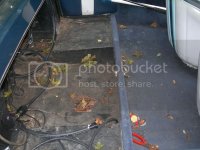Boston Predictor
Well-known member
As some of you may or may not know (dosent matter) My 1989 predictor is getting a complete overhaul from top to bottom. Im starting with the floor.
I know that there are alot of people here who have done this and I was just wondering what tools would be best for the job. perhaps there are some tips you could all share to make the job go smoother. thanks in advance
Geoff
I know that there are alot of people here who have done this and I was just wondering what tools would be best for the job. perhaps there are some tips you could all share to make the job go smoother. thanks in advance
Geoff




